Warrnambool, Victoria: A Great Ocean Road coastal adventure

I wasn’t expecting to suddenly find myself face to face with a $4 million peacock but there it is, standing proudly atop a rock, beak raised and brilliant plumage draping to the ground.
Okay, it’s not an actual living bird but a 1.44-metre-high work of Majolica glazed earthenware, created by England’s famous Minton Potteries in the 1870s and now standing pride of place in the museum at Warrnambool’s Flagstaff Hill Maritime Village.
“If this bird could talk, what would it tell us?” asks the placard beneath it. Probably a scary tale of how it sailed here aboard the doomed clipper Loch Ard in 1878, destined to appear at the opening of Melbourne’s Royal Exhibition Building only to sink in a violent storm that killed all but two of its fellow 54 passengers and crew.
The peacock made it ashore with only a chipped beak and is one of 7000 artefacts scattered across a replica pioneer village that brings to life the 19th century, complete with appropriately costumed villagers. There’s everything you’d expect to find in a port town of the day, from ship chandlers and sailmaker’s loft to newspaper office and lolly shop. Situated on Flagstaff Hill — signal flags were hoisted here to communicate with ships — there’s also a garrison (the cannon is fired every month) and an original lighthouse and lightkeeper’s cottage, moved here brick-by-brick from Middle Island.
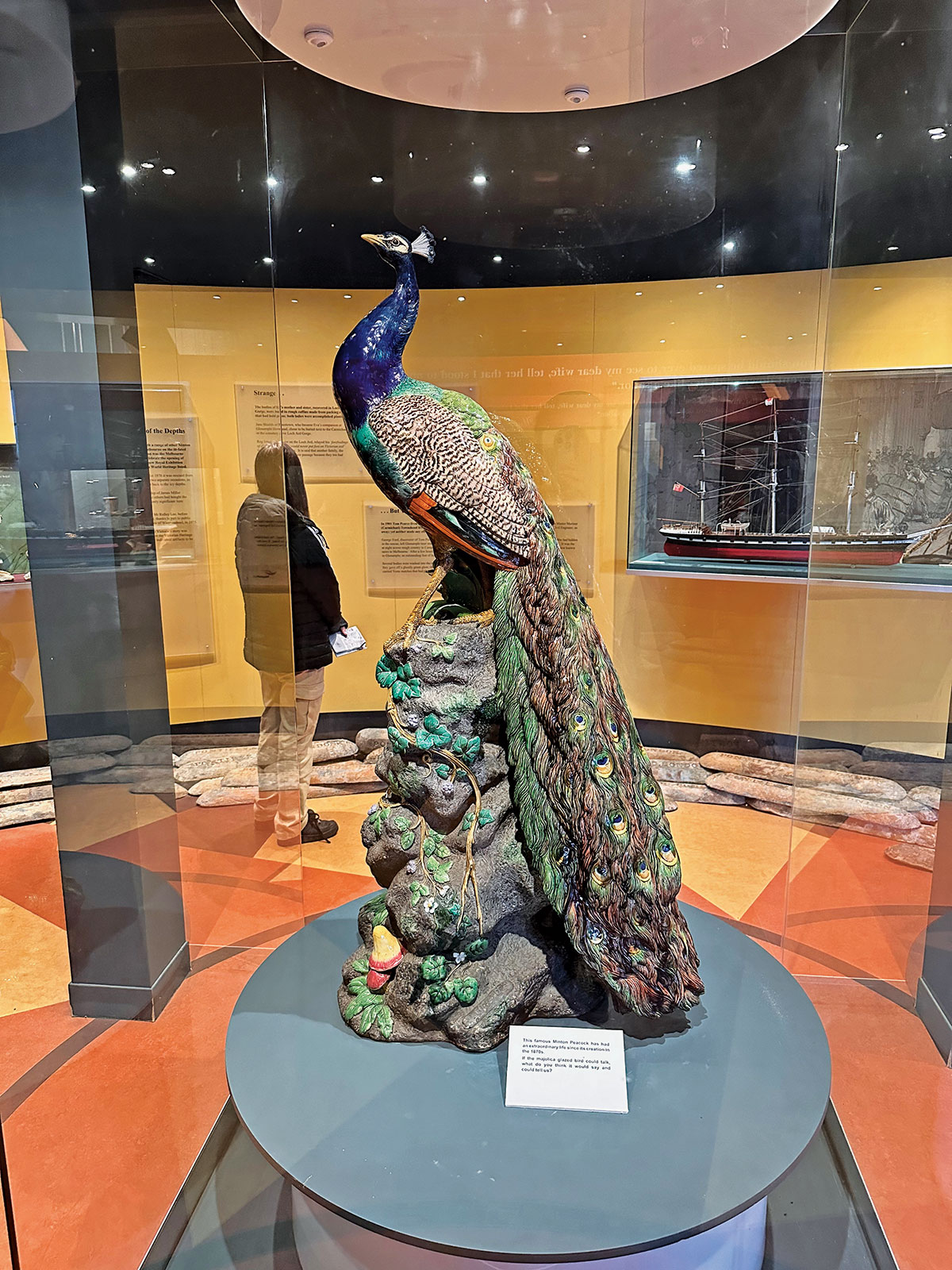
You couldn’t pick a better starting point to understand Warrnambool’s backstory. Three hours west of Melbourne, the town sits at the furthermost end of the famously scenic Great Ocean Road — a part aptly dubbed the Shipwreck Coast, where over 170 ships came to their demise. While the classic road trip rightly gets a lot of attention for its many dramatic rock formations and coves — including the Twelve Apostles and Loch Ard Gorge (where the two survivors of the shipwreck dragged themselves ashore) — Warrnambool and its immediate surrounds deserves a thorough investigation of its own.
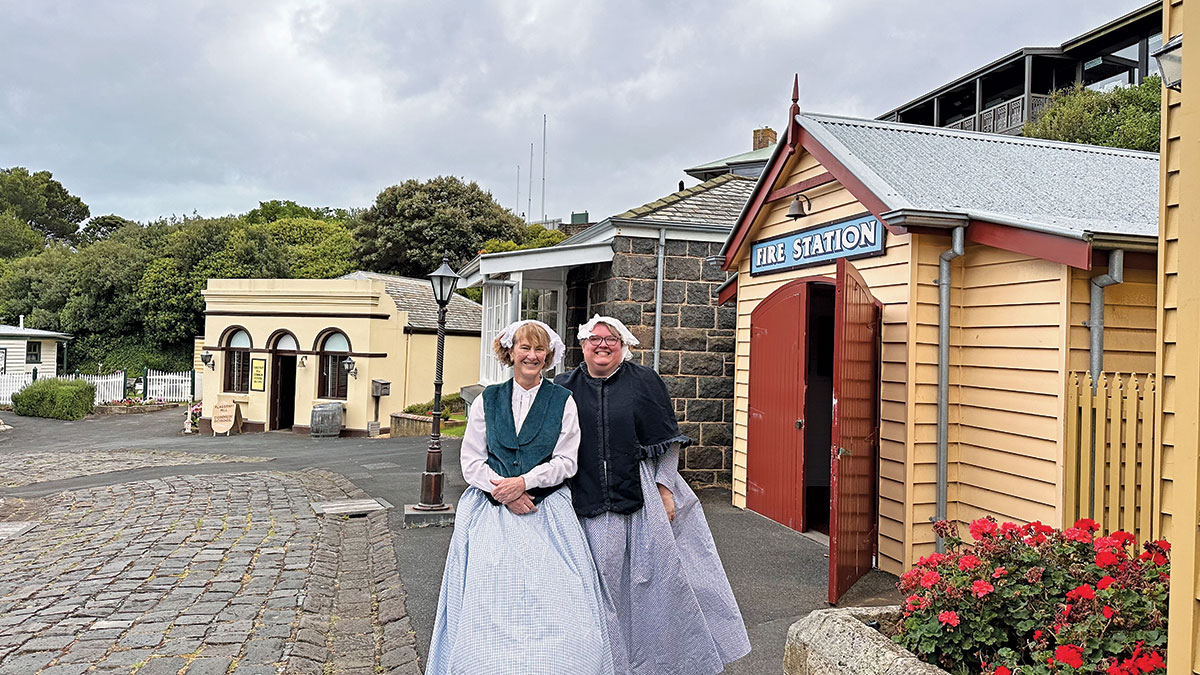
Coast with the most
There’s a decent contingent of people who come here simply to roll out a beach towel and revel in the kilometres of golden sand and invigorating waters, and who could blame them? The great sweeping arc of Lady Bay makes an alluring prospect — the western end is usually pretty calm; in the middle, Surfside Beach is patrolled in summer; at the eastern end, The Flume is good for surfing — however, during my visit, the air is just a little too fresh for a dip in the Southern Ocean.
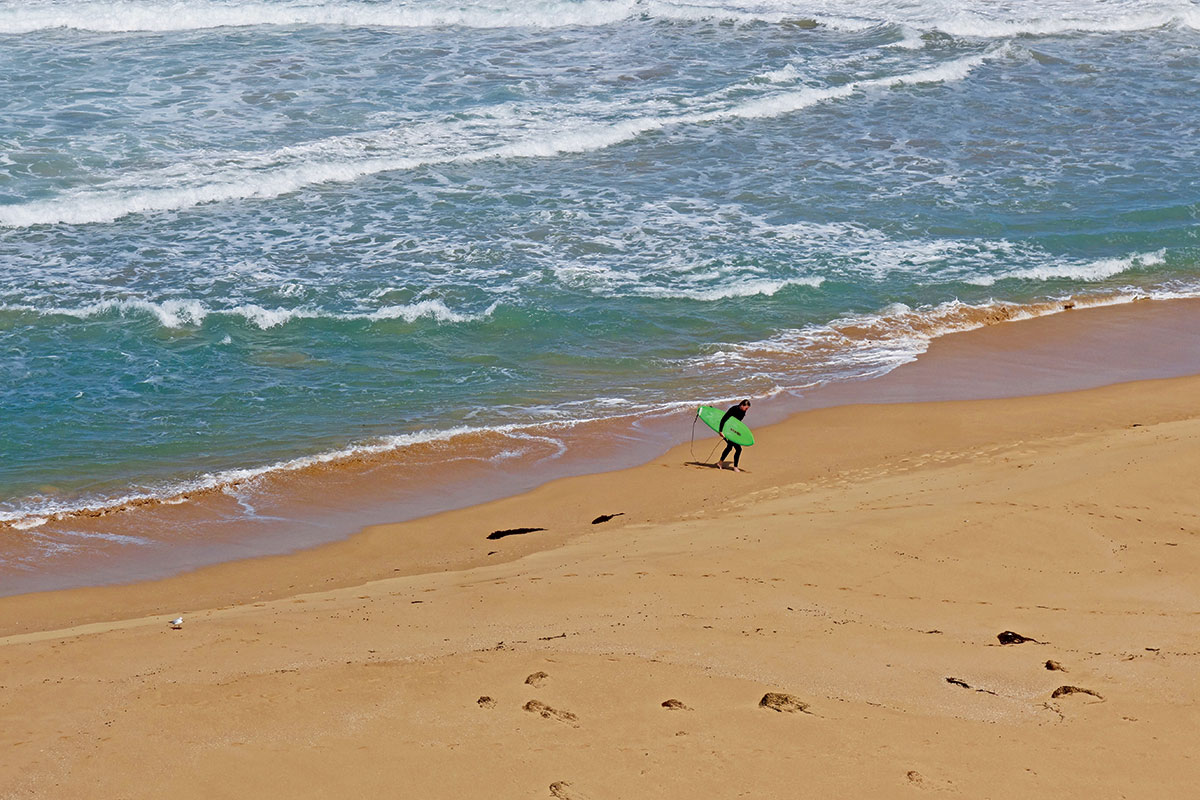
Only a stone’s throw away, though, is Deep Blue Hot Springs where the temperatures are a far more tempting 35–42 degrees (there’s an ice-cold plunge pool for masochists). Natural geothermal waters bubbling 800m underground are pumped into a string of open-air rock pools and sensory caves that make a sanctuary in which to while away a few hours.
I opt for an early morning session and the peaceful pools, surrounded by landscaped gardens, are an almost meditative place to start the day. A few tiny waterfalls make irresistible head and shoulder massagers.
From here I’m only a short walk from the start of a scenic track and boardwalk that hugs the coast round to Thunder Point. It starts with a swing bridge across the Merri River at Stingray Bay, a crystal-clear cove where sandbars swirl through shallow waters and rock pools make interesting exploration.
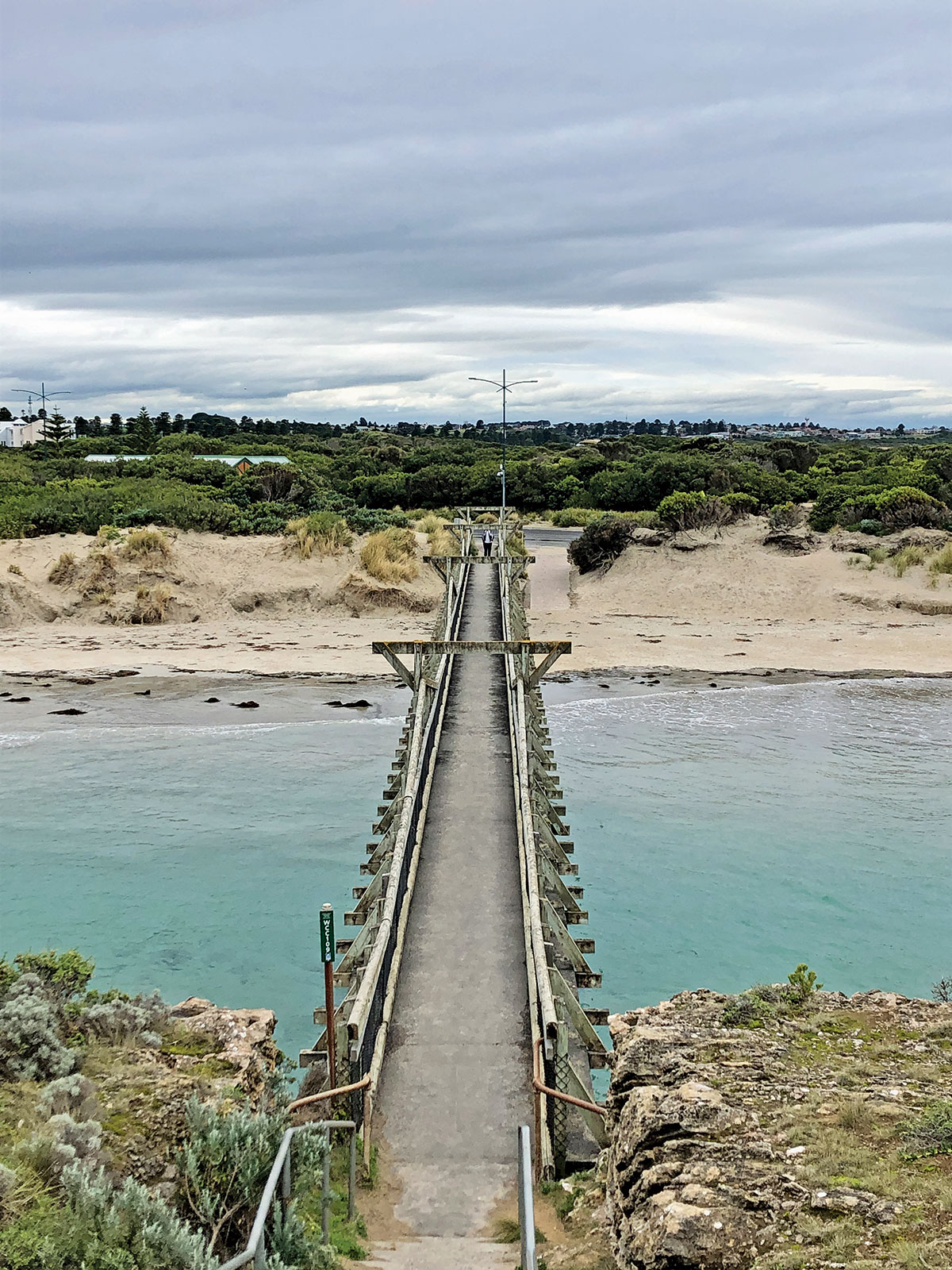
The bay is sheltered by Middle Island, a small rock and grass-covered island about 150m offshore, and if you’ve seen the movie Oddball then you know the story how in 2006 a local chicken farmer had the bright idea to use Maremma dogs to protect the island’s penguins from foxes. It was a huge success and currently a team of three guardian dogs work the island year-round.
Visitors aren’t permitted on this wildlife sanctuary, but you can meet the dogs and learn about their work during regular sessions held by Penguin Protectors and at Flagstaff Hill Maritime Village. Flagstaff also often has a few retired pooches resting on the grass.
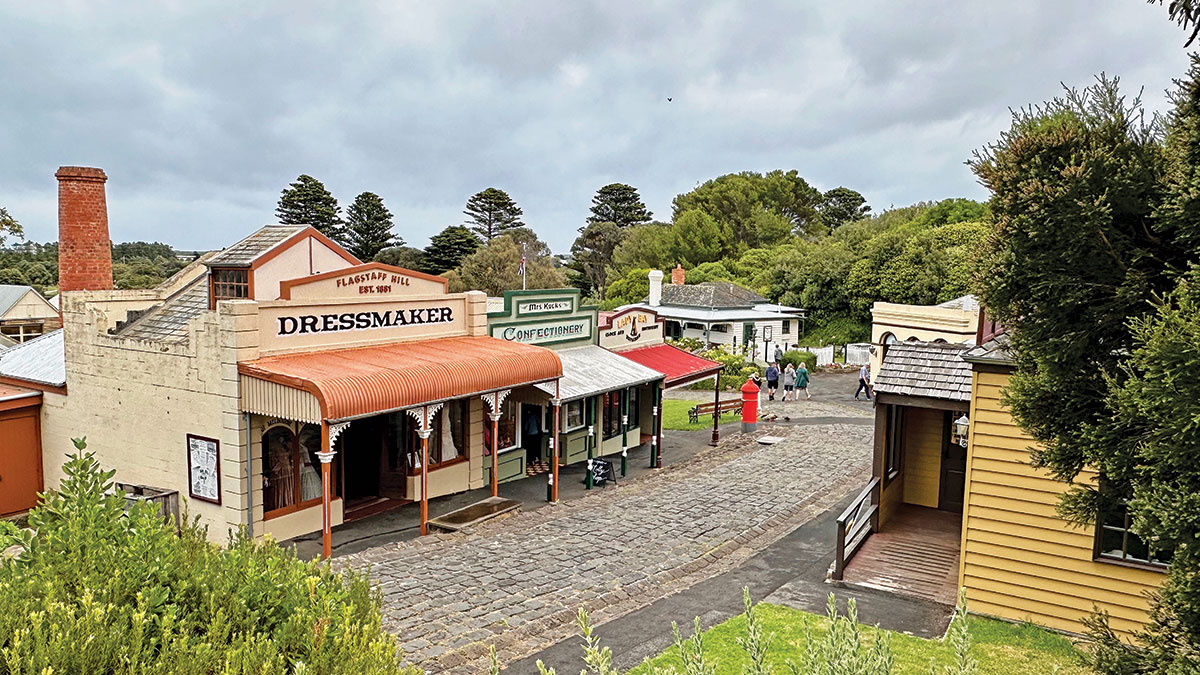

Another great coastal track is the Foreshore Promenade, a scenic route that runs for 5km alongside the coast from Breakwater to the Hopkins River. With a few gentle undulations, it eventually curves around Point Ritchie where a track deviates up the peaceful river — incidentally good fishing for bream, mullet and mulloway.
Straight to the heart
Nudging Warrnambool’s CBD is the surprising and utterly delightful Lake Pertobe. In the 1970s, ephemeral wetlands were somewhat tamed into this 58-hectare reserve of lakes and islands, winding trails hopping with little blue fairywrens, and the kind of mind-blowing adventure playgrounds I wish were around when I was a kid. In summer, the colourful and dinky motorboats available for hire are particularly popular.
Heading out on the 1.5km circuit walk, I quickly understand how Lake Pertobe has made the Top 10 Best Parks in Trip Advisor’s Traveller’s Choice awards (South Pacific) several times over. Multiple play areas feature exciting stuff like mini trampolines, flying fox and a 9m slide, and there are barbecues aplenty, but personally I love the quieter sections — grassy avenues sliding between lakes lined with reeds and swans, and little bridges reaching across the water. Pertobe is a twitcher’s delight and Birdlife Warrnambool has a great pamphlet (available from the Visitor Centre) outlining the 100 or so species you might expect to find.

All of this is only 500m from the centre of Warrnambool whose streetscapes enjoy the heritage influence of its mid-1800s beginnings. The 3km CBD Heritage Trail flags 22 of its most attractive buildings, but equally appealing is the sprinkling of street art, from colourful graffiti to the sculpture of a giant seal ‘popping its head up’ in the middle of main Liebig Street.

Wonderful wildlife
I’ve been to Warrnambool several times but had somehow never heard of Tower Hill Reserve, a short drive (20 minutes) west. How a striking volcanic cone rising from a circular lake and heaving with wildlife had previously escaped my radar is a mystery, but this is a place not to be missed.
Tower Hill last blew its top about 30,000 years ago and the Koroitgundidj people were there to witness it (artefacts have been found in the layers of ash). Now dormant, the reserve is packed with remarkable features like conical hills, craters, ash layers and lava flows, and provides a home for koalas, emus, kangaroos, sugar gliders, echidnas, over 160 bird species and plenty more creatures.
I get my first look at it on the drive in as I crest the outer crater rim. A winding road descends into it and crosses a narrow isthmus across the lake to arrive on the central cone. Birdsong is immediately noticeable. Four main walking trails loop throughout the park and my first is the 30-minute Peak Climb which skirts steeply up the Yatt Mirng Crater. It’s a perfect place to get an overview (literally) of Tower Hill, with panoramas stretching across the crater-lake and beyond, all the way to the ocean.
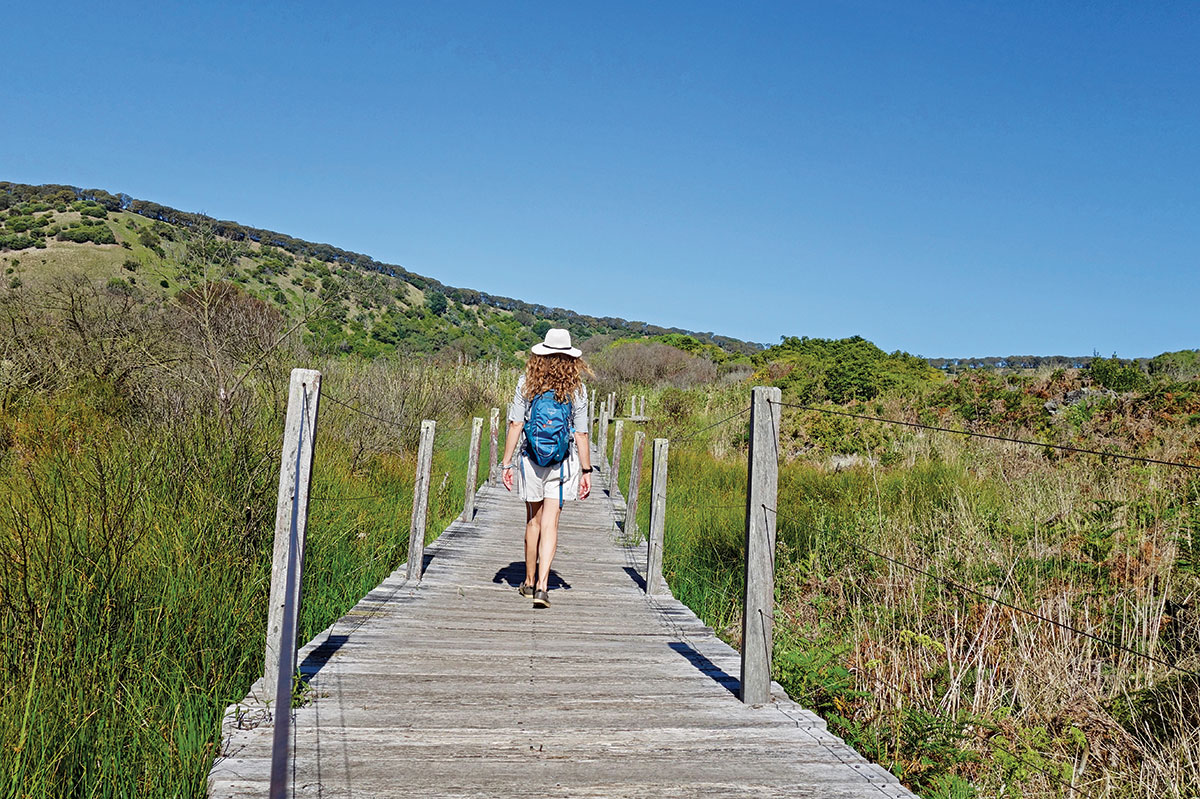
The evocatively named Journey to the Last Volcano Loop is a delight, skirting past a huge pond, lake and forest to climb the last cone to erupt here. Circumnavigating the narrow rim offers glimpses of its own crater lake. The Lava Tongue Boardwalk is an easy 30-minute circuit across an ancient lava flow where craggy nubs of basalt protrude through wetlands.
I’m so immersed in the scenery that I forget to look up until I notice fellow visitors pointing into the manna gums. All up, I count four koalas, sleepily draped over branches, four emus (watch your lunch, they’re not shy) and an echidna.
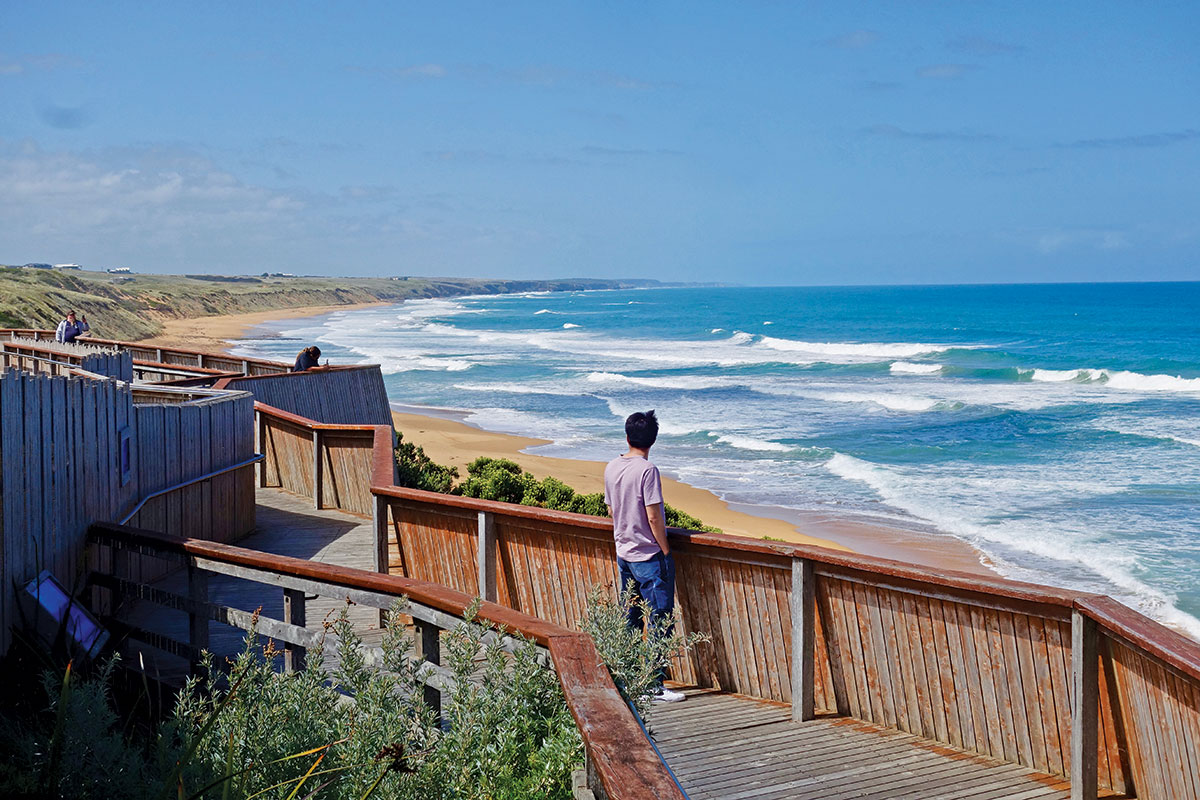
Perhaps the animal the region is most famous for is the whale and, back at Warrnambool, Logans Beach is a nursery for southern right whales. From June to September, mothers and calves can often be seen lingering within 100m of shore until their spring migration to Antarctica. Though I’m visiting out of season, Logan’s Lookout still offers a captivating outlook over a long golden beach and energetic ocean.
Fairy in the backyard
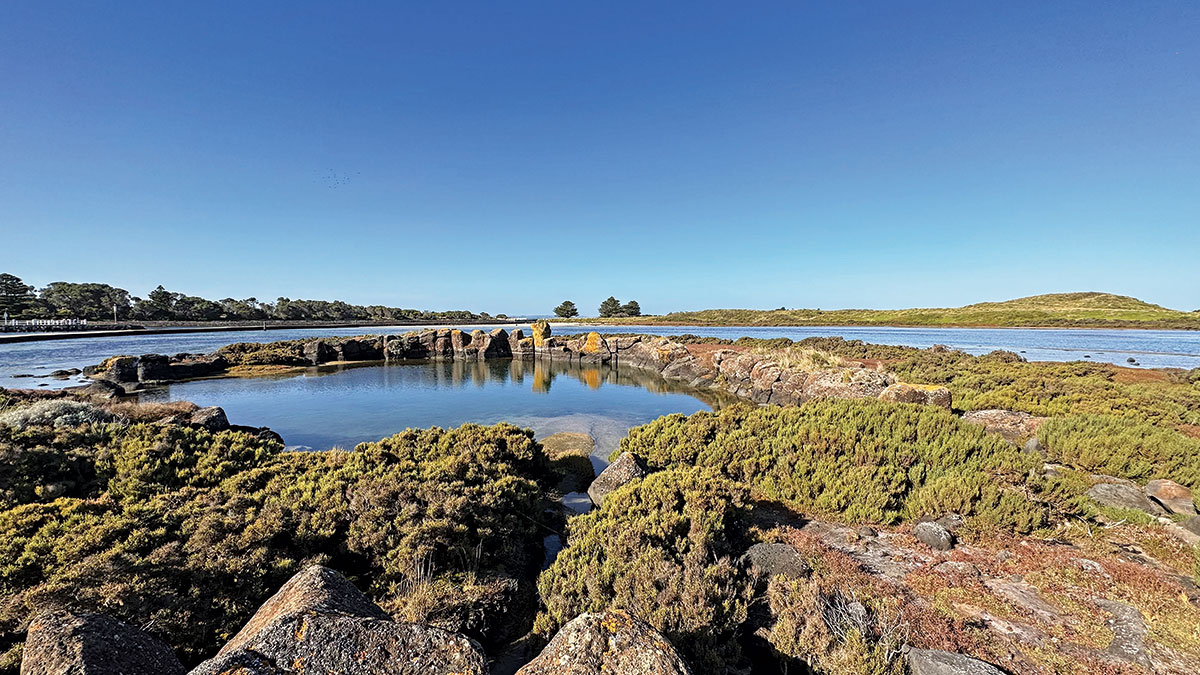
It’s another town away but you couldn’t visit Warrnambool without nipping 20 minutes up the coast to Port Fairy (2–3 hours if you go by bike on the 37km Port Fairy — Warrnambool Rail Trail). Born on the back of whaling and fishing in the 19th century, the old shipping port at the mouth of the Moyne River retains much of its heritage character with a gorgeously quaint town and a picturesque riverside path that sidles alongside fishing boats and cute cottages.
I arrive a few hours before sunset, and the light is perfect for a walk around Griffiths Island. Originally a cluster of three islands, harbour works consolidated the land into one island in the early 1800s, later named after entrepreneur John Griffiths.
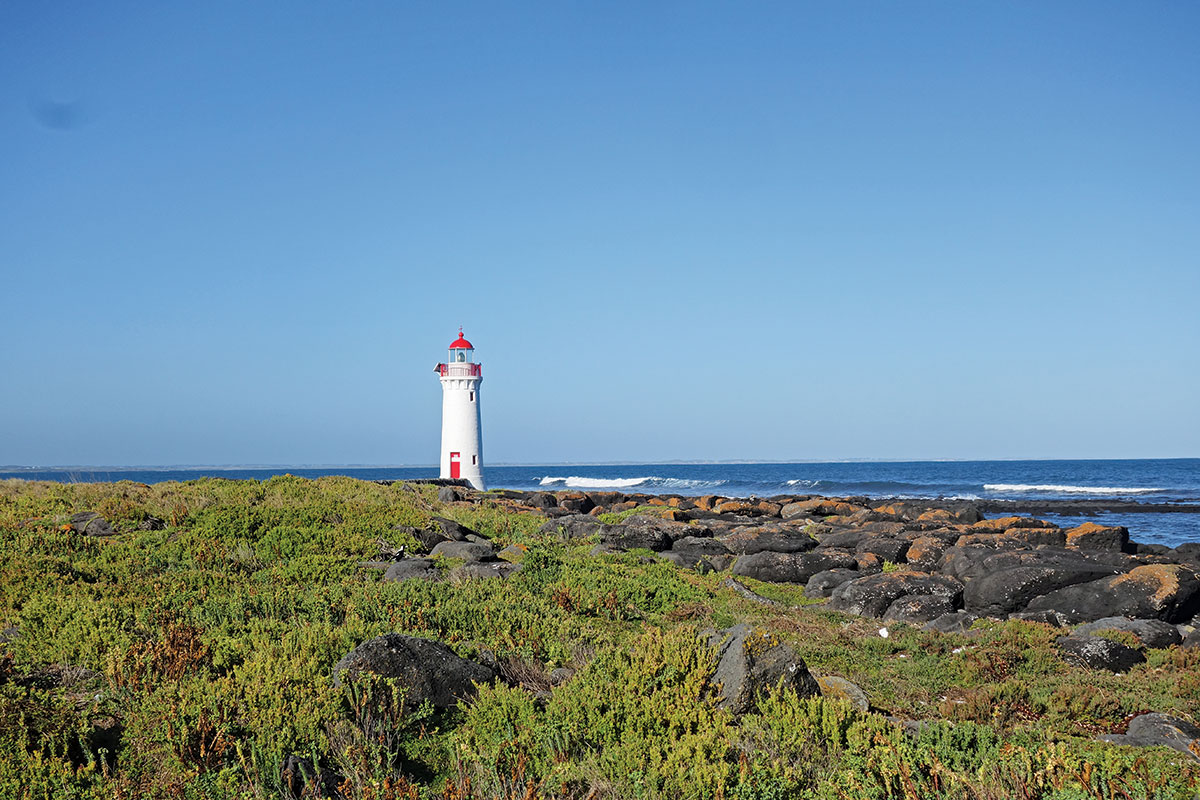
I walk across the causeway that connects it to the mainland and follow the 3km circuit track past a stand of Norfolk Island pines, a lighthouse and an idyllic circular bay sheltered by a breakwater. Every September, thousands of short-tailed shearwaters (mutton birds) arrive here for breeding as part of their 15,000km migration, and their burrows litter the island so don’t wander off track. Sandy tracks drizzle across windswept heath offering unhindered views of the ocean, and in the late afternoon, the shades of blues and greens are rich.
By the time the sun is setting I’m back on the Moyne River at The Wharf restaurant, glass of pinot grigio in hand and perusing a menu heavy with seafood. Life in a fishing village doesn’t get much better than this.
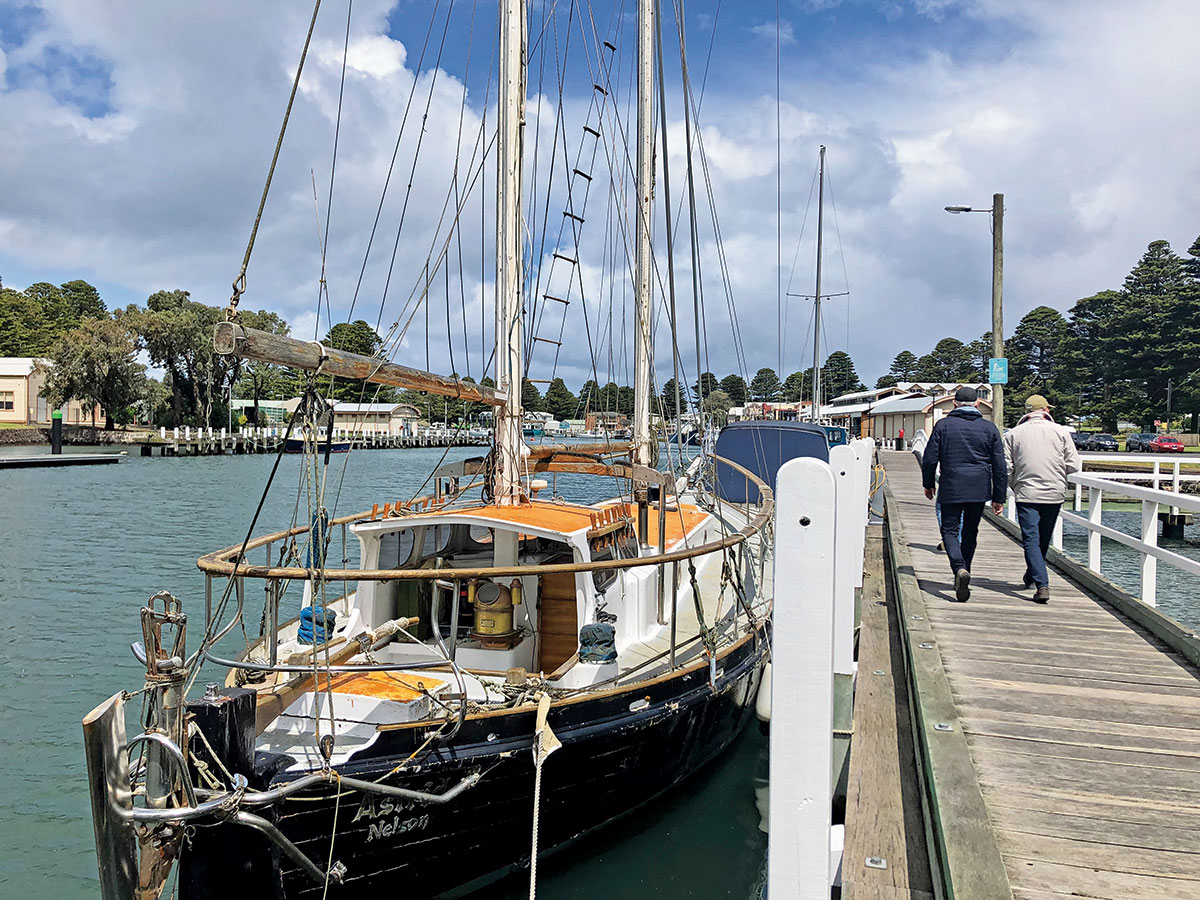
Fast Facts
Stay
Warrnambool’s six holiday parks offer ample options. Low-key and with direct access to the beach is Surfside Holiday Park. BIG4 Tasman Holiday Parks - Warrnambool (formerly BIG4 Figtree Holiday Park) is centrally located on the edge of the CBD and BIG4 NRMA Warrnambool Riverside Holiday Park is set on the banks of the Hopkins River. Discovery Holiday Parks is slotted between the beach and Lake Pertobe and has all the bells and whistles.
Eat and drink
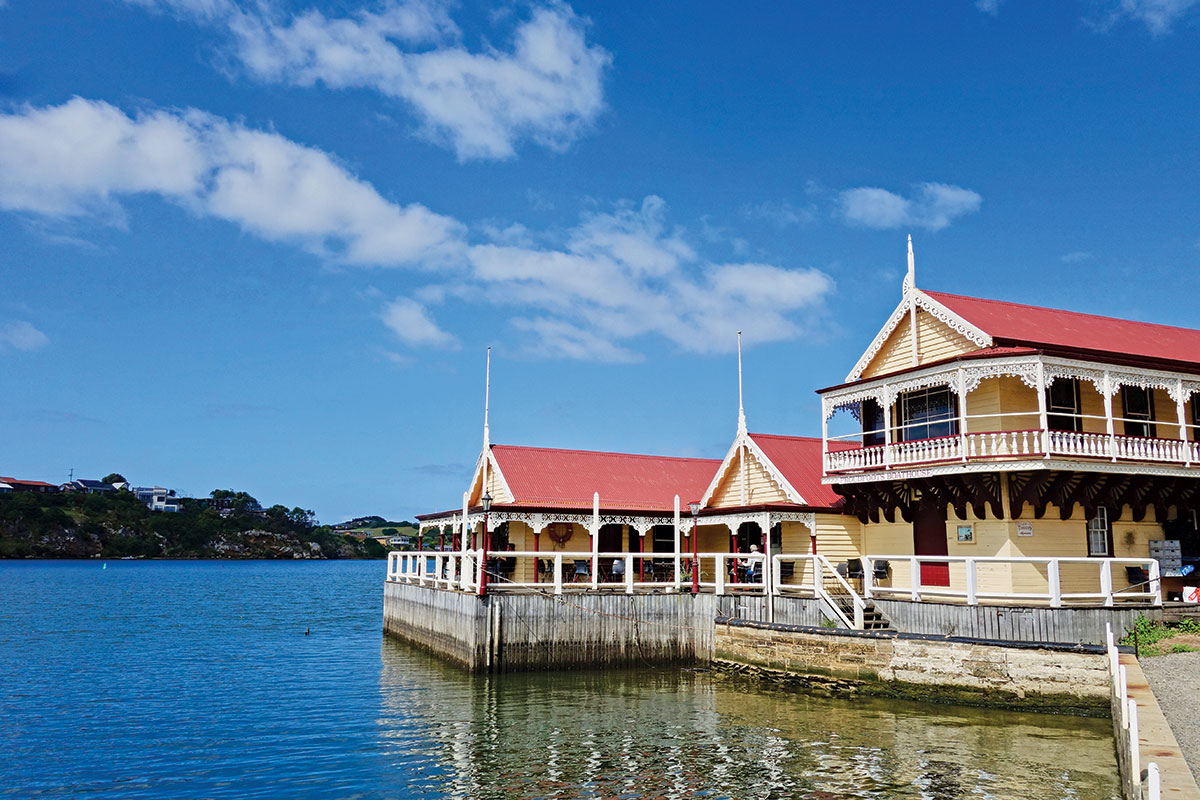
It’s hard to beat the expansive sea views at waterfront Pavilion Café and Bar, but another popular option is Proudfoots by the River, set in a heritage boathouse on the Hopkins and offering seriously good food. The Dart and Marlin has a buzzing restaurant and beer garden, or head to the cool Frolic Lane for wine, cocktails, pizza and live music. Fishtales Café’s massive menu has something for everyone.
Do
Immerse yourself in 19th century port life at Flagstaff Hill Maritime Village — at night they have an evocative sound and light show. Soak at the peaceful Deep Blue Hot Springs, roam Lake Pertobe and enjoy the bushwalking and wildlife encounters at Tower Hill Reserve.
Final tip!
It might go without saying, but if you're heading to Warrnambool from the east, then don't miss many of the fantastic stops along the way, including Teddy's Lookout in Lorne, the Great Otway National Park (Apollo Bay is a great place to set up camp if you want to spend a day or more exploring this fantastic national park), Gibson Steps and of course — the iconic Twelve Apostles located off the shore of Port Campbell National Park. This coastal route has plenty to see and do, so if you've got the time make sure you check out the many optional short detours.
More info
Head here for more inspiration about what you can see and do in Warrnambool.
THE NEXT STEP
Are you ready to experience the freedom of the open road? Don't wait - Find your dream getaway now!







